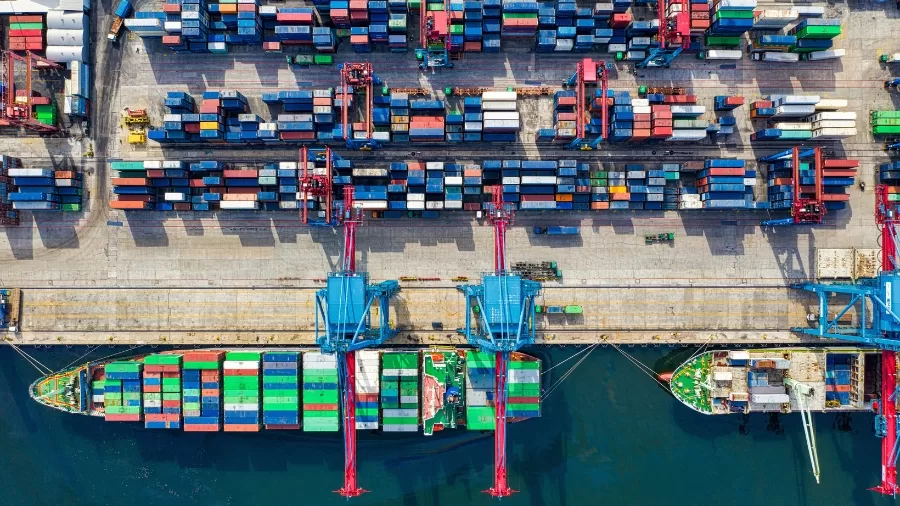Business
US-China Trade Tensions: Impact on Tech Giants and Global Trade

- As China pushes local AI chip development, Nvidia, subject to US export prohibitions, fears billions in revenue losses.
- Apple struggles to diversify away from China-centric production as tariffs rise and political pressure mounts in the United States.
- DHL and worldwide logistics are seeing disruptions as US import laws tighten, affecting e-commerce and international shipping.
The rising trade tensions between the United States and China are altering the global economic landscape, with far-reaching consequences for technology, manufacturing and logistics. As geopolitical policies meet with economic interdependence, businesses must navigate a complicated web of tariffs, export controls, and supply chain interruptions. This article delves into three main areas impacted by these tensions: the semiconductor business, as demonstrated by Nvidia’s issues; the manufacturing sector, as exemplified by Apple’s reliance on China; and the logistics sector, as seen in DHL’s response to increased tariffs. The issues faced by these brand behemoths are simply the tip of the iceberg, and this gives us a peek into the broader ramifications of the US-China trade war for global trade and technology.
Nvidia’s AI Chip Problem.
Nvidia, a pioneer in artificial intelligence (AI) chip design, has become a focal point in the U.S.-China trade battle. The US government has imposed stringent export controls on Nvidia’s powerful AI processors, particularly the H20, which are critical for developing cutting-edge AI technologies. These limits require licences for exporting such chips to China, limiting Nvidia’s sales in one of its core markets. The United States accounts for roughly half of Nvidia’s sales, while China accounts for 13%, making the latter a vital but risky market for the company.
It is being predicted that the damage will have long-lasting repercussions for Nvidia, with reported drops in orders from the leading IT companies of China, including Tencent, Alibaba, and ByteDance, which would have cost the company as much as $5.5 billion (£4.15 billion). This situation inspired Jensen Huang to visit Beijing, accompanied by Chinese contacts, including Ren Hongbin of the China Council for the Promotion of International Trade and Mayor Gong Zheng of Shanghai. The highlight of this engagement was how Huang pointed to the history of China’s vast market and Nvidia’s determination to maintain business ties with China, even though there were some regulatory hurdles before them.
China, on the other hand, is moving forward. The country is stepping up its attempts to develop indigenous AI technologies, with corporations like Huawei spending substantially on alternative AI chips. While these processors are now regarded as inferior to Nvidia’s offerings, US limitations may unintentionally spur innovation in China. For example, DeepSeek, a Chinese AI company, has claimed efficacy using less advanced chips, implying that necessity may drive technological progress.
The overall scenario is one of growing US-China technological competition. The United States is attempting to de-risk its supply chains by bringing semiconductor manufacturing back home, with Nvidia budgeting $500 billion (£378 billion) in AI servers and Taiwan Semiconductor Manufacturing Company (TSMC) investing $100 billion (£75.6 billion) in Arizona. Meanwhile, global technology is becoming increasingly divided between US and Chinese systems, with Nvidia trapped in the midst.
Apple’s Manufacturing Maze
Apple, another digital behemoth with a strong presence in the Chinese market, is facing its own set of issues as trade tensions escalate. China accounts for roughly 90% of the company’s iPhone production, with Foxconn’s “iPhone City” in Zhengzhou acting as the world’s largest iPhone plant. China is Apple’s second-largest market, with over 1 billion potential buyers, making it important for both production and sales.
The recent increase in US taxes on Chinese goods has placed Apple in a difficult situation. While cellphones and computers were temporarily protected from the latest wave of tariffs, President Trump has stated that no industry will be spared inspection, particularly the semiconductor sector. Apple had previously benefited from exclusions during Trump’s first term, but the current administration’s posture signals a more stringent approach.
Apple’s ties to China trace back to the 1990s, when it began using third-party vendors. It entered the Chinese market in 2001 through a Shanghai-based trading firm and collaborated with Foxconn on manufacturing. In 2008, the first Apple Store in China opened in Beijing’s Sanlitun area, marking a significant step forward in the company’s expansion. Currently, 150 of Apple’s top 187 suppliers have factories in China, emphasising the country’s importance in the supply chain.
However, since 2013, Apple has attempted to diversify its production base by creating businesses in countries like as Vietnam and India. Despite these efforts, China still accounts for the majority of manufacturing due to its established infrastructure and skilled labour. Moving assembly operations to the United States, as proposed by certain US politicians, is deemed impractical by specialists such as Eli Friedman, a former academic advisory board member, who considers it a “pure fantasy” due to the complexity and cost.
Apple CEO Tim Cook acknowledged China’s importance, saying, “There’s no supply chain in the world that’s more critical to us than China.” However, the corporation is under increasing pressure to minimise its reliance on China, particularly as US authorities attempt to bring crucial technologies such as semiconductors back to American soil. Apple has pledged a $500 billion (£378 billion) investment in the United States, but moving production away from China remains a difficult challenge.
DHL’s Delivery Dilemma
The logistics industry is also dealing with the consequences of US-China trade tensions. DHL Express has suspended deliveries to the United States, totalling more than $800 (£603), due to increasing red tape caused by new tariff laws. This suspension, which begins on Monday, impacts consumer shipments and may cause delays in business-to-business deliveries as well. Previously, shipments worth up to $2,500 (£1,890) could enter the United States with minimal paperwork thanks to the “de minimis” loophole. However, the White House eliminated this loophole starting May 2, lowering the barrier to $800 (£603) and necessitating more severe customs inspections.
The measure is part of a larger US attempt to confront the synthetic opioid supply chain, which the government ties to China. However, Beijing has rejected these worries as a “US problem”, emphasising the geopolitical implications of the situation. The new laws have required businesses to undergo more formal customs procedures, which DHL says are being handled around the clock to prevent inconveniences.
E-commerce biggies such as Shein and Temu, which rely primarily on low-value imports, are expected to hike prices in response to these developments. Hong Kong Post has likewise suspended sea-going deliveries headed for the United States and will no longer accept parcels from April 27th, citing US tariffs as “unreasonable, bullying, and imposing abusively”. These measurements highlight the broader implications of trade tensions for global logistics and consumer sectors.
Here’s How The Cookie Crumbles
The current US-China trade war is altering the global technology and commerce landscape. Companies such as Nvidia, Apple, and DHL are navigating a maze of rules, tariffs, and geopolitical agendas. Nvidia’s AI chip limits show the US’s efforts to maintain technical dominance while encouraging China to innovate independently. Apple’s manufacturing problem exemplifies the difficulties of disconnecting from a highly integrated supply chain. Meanwhile, DHL’s service suspension highlights the ripple effects on logistics and e-commerce.

















































